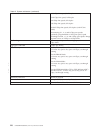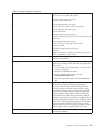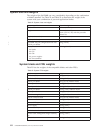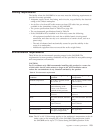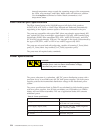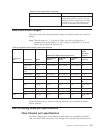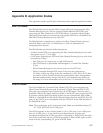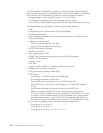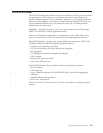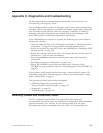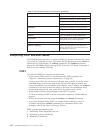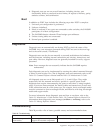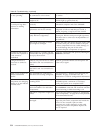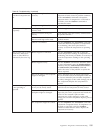The FX8-24 blade is intended as a platform for FCIP and Fibre Channel Routing
Services. Refer to the Fabric OS Administrator’s Guide for information on configuring
these features. The FX8-24 blade provides the following hardware features:
v 12 autosensing FC ports with link speeds of 1, 2, 4 or 8 Gbps
v Ten GbE ports supporting FCIP with fixed link speed at 1 Gbps
v Two 10 GbE ports (licensable) supporting FCIP with fixed link speed at 10 Gbps
The FX8-24 blade also provides the following functionality features:
v FCIP
v Compression (on FC frames before FCIP encapsulation)
v FC Routing (licensable)
v FCIP Trunking (licensable) with network-based failure recovery (failover only)
and load balancing
v Multiple circuits per trunk
– Four per trunk through the GbE ports
– Ten per trunk through the 10 GbE ports
v SO-TCP with reorder resistance
v FastWrite over FCIP
v Tape pipelining over FCIP
v FICON XRC emulation and tape pipelining over FCIP (licensable)
v FICON CUP (licensable)
v Virtual E_ports
v FCIP QoS
v Support for 200 ms RTT (on a limited number of GbE ports)
v Adaptive Rate Limiting (licensable)
v TCP performance graphing in Web Tools
v FCIP Tunnels
– A maximum of 10 FCIP Tunnels for all GbE ports
– Four tunnels maximum per GbE port
– Two 10 GbE ports can support up to ten FCIP tunnels each
– Each FCIP tunnel is represented and managed as a virtual Fibre Channel
E_Port
– Fibre Channel Routing Services can be used over the FCIP link
– Fabrics connected through FCIP merge if the ports are configured as
VE_Ports, and do not merge if they are configured as VEX_Ports. If VE_Ports
are used in a Fibre Channel Routing Services backbone fabric configuration,
then the backbone fabric merges, but the EX_Port-attached edge fabrics do
not merge. For more information refer to the Fabric OS Administrator's Guide.
v Up to three FC trunking groups. The three groups are defined as:
– Trunk group 0: FC ports 0, 1
– Trunk group 1: FC ports 6, 7
– Trunk group 2: FC ports 2, 3, 4, 5, 8, 9, 10, 11
128 SAN384B Installation, Service, and User Guide



